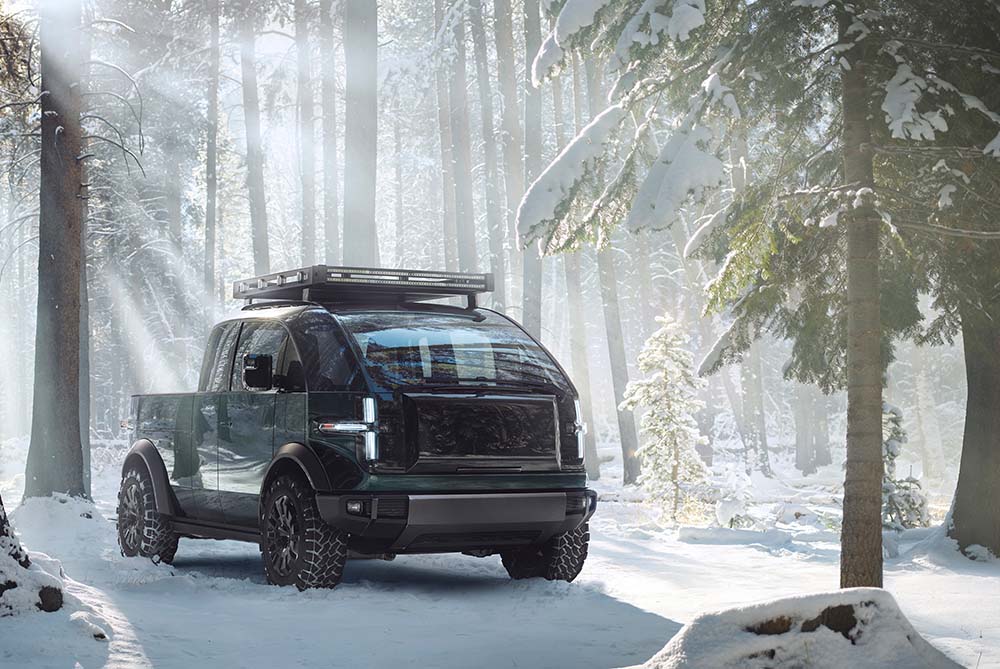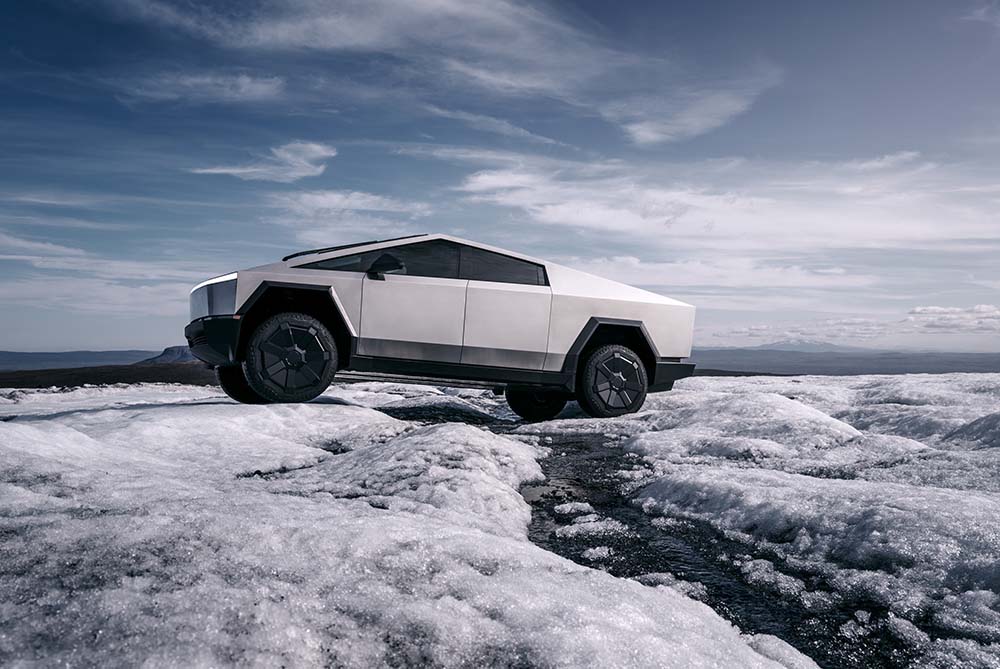George Boulton
July 16, 2024

George Boulton
July 16, 2024

Tesla and Canoo's electric pickups showcase revolutionary aerodynamic designs
Tesla Cybertruck is made of a stainless-steel alloy which is very strong but also light…
This isn’t about making them less boxy – boxy is a good starting point for aerodynamic efficiency, it’s about conditioning airflow, reducing eddies, cutting drag, reducing rolling resistance.
Electric pickups have an advantage over their ICE cousins, being more flexible in the layout of their powertrain and cooling requirements.
Tesla’s Cybertruck pays only cursory attention to traditional styling cues, while the Canoo Pickup is a work of art, looking a bit like an Orca in its design.

With a large sloping head, it’s able to increase airflow and cut through the air more efficiently and consume less electricity.
Lightweight materials also play a crucial role. This is why the Tesla Cybertruck is made of a stainless-steel alloy which is very strong but also light… if you consider nearly 7,000lbs to be light.
While it’s not exterior looks, it’s important to mention hybrid and electric powertrains because they represent another leap forward in improving fuel efficiency.

Gone are the days of massive V8s and instead we’ve made a significant switch to turbo-charged and hybrid power that’s often more beneficial and responsive to drive.
The integration of advanced technology further optimizes fuel efficiency.
Mild hybrid features such as start-stop systems, which shut off the engine at idle and regenerative braking, which recovers energy during braking, are now common in modern pickups.
So, the design of modern pickup trucks significantly impacts fuel efficiency.
Through aerodynamic improvements, the use of lightweight materials, the adoption of hybrid and electric powertrains and advanced technologies, manufacturers are crafting trucks that are not only powerful and versatile but also more fuel-efficient.
These innovations reflect a commitment to sustainability, ensuring that pickups remain relevant and efficient in an eco-conscious world.